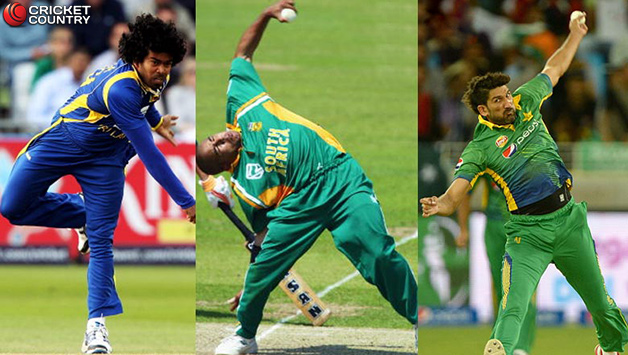


Bowling, in cricket, is the action of propelling the ball toward the wicket defended by a batsman. -Curtley Ambros
In the early days of cricket, underarm bowling was the only method employed. Many theories exist about the origins of cricket. One suggests that the game began among shepherds hitting a stone or a ball of wool with their crooks and, at the same time, defending the wicket gate into the sheep-fold (from Anglo Saxon 'cricce', a crooked staff). A second theory suggests the name came from a low stool known as a 'cricket' in England, which from the side looked like the long, low wicket used in the early days of the game (originally from the Flemish 'krickstoel', a low stool on which parishioners knelt in church). There is also a reference to 'criquet' in North-East France in 1478 and evidence that the game evolved in South-East England in the Middle Ages.

Pace bowlers, or fast bowlers or pacemen, rely on speed to get a batsman out. This type of bowler can be further classified according to the speed at which they bowl the ball on average.Most pace bowlers are medium-fast to fast in top level cricket. In general, bowlers of this type are described as right arm or left arm "fast" or "fast-medium". Another technique of fast bowling is the sling action. This action generates extra speed but sacrifices control. Exponents include Lasith Malinga, Mitchell Johnson, Fidel Edwards and Shaun Tait.The highest electronically measured speed for a ball bowled by any bowler is 161.3 km/h (100.23 mph) by Shoaib Akhtar (Pakistan) against England on 22 February 2003 in a World Cup match at Newlands, Cape Town, South Africa.
Swing bowlers are pace bowlers who, apart from being fast, also use the seam of the ball to make it travel in a curved path through the air. This is further encouraged by systematically polishing one side of the ball while allowing the other side to become roughened and worn. The differing airflow around the two sides will cause the ball to swing in the air, towards the roughened side. By changing the orientation of the ball in his hand, a bowler may therefore cause the ball to swing into or away from the batsman. In addition to a well-polished ball, other factors help the ball to swing, notably damp or humid weather conditions. However balls which have been in play for some time do not tend to swing so much due to the deterioration of the seam. In addition, bowlers of express pace do not tend to get as much swing as the fast-medium-to-medium pace bowlers.
Wrist spinners are bowlers who use their wrists to spin the ball. A right-handed wrist spinner is known as a leg spinner and his or her mode of bowling is known as leg break. A leg break will move from right to left from the bowler's point of view, or from the leg-side to the off-side for a right-handed batsman. Wrist spinners include Shane Warne, of Australia and Imran Tahir, of South Africa. Finger spinners make use of their fingers to rotate the ball. A right-arm finger spinner is known as an off-spinner and their mode of bowling is known as off break. The ball will appear to move just as the left-arm unorthodox ball does, from off to leg for a right-handed batsman. Muttiah Muralitharan (often called "Murali") of Sri Lanka and Graeme Swann of England, two of the most successful bowlers in Test and ODI cricket history, are off-spinners. Murali's bowling style is unique, while Swann's is more conventional. Indian Harbhajan Singh and Ravichandran Ashwin and Pakistanis Saqlain Mushtaq and Saeed Ajmal are amongst contemporary bowlers of this type, who also employ this bowling style.